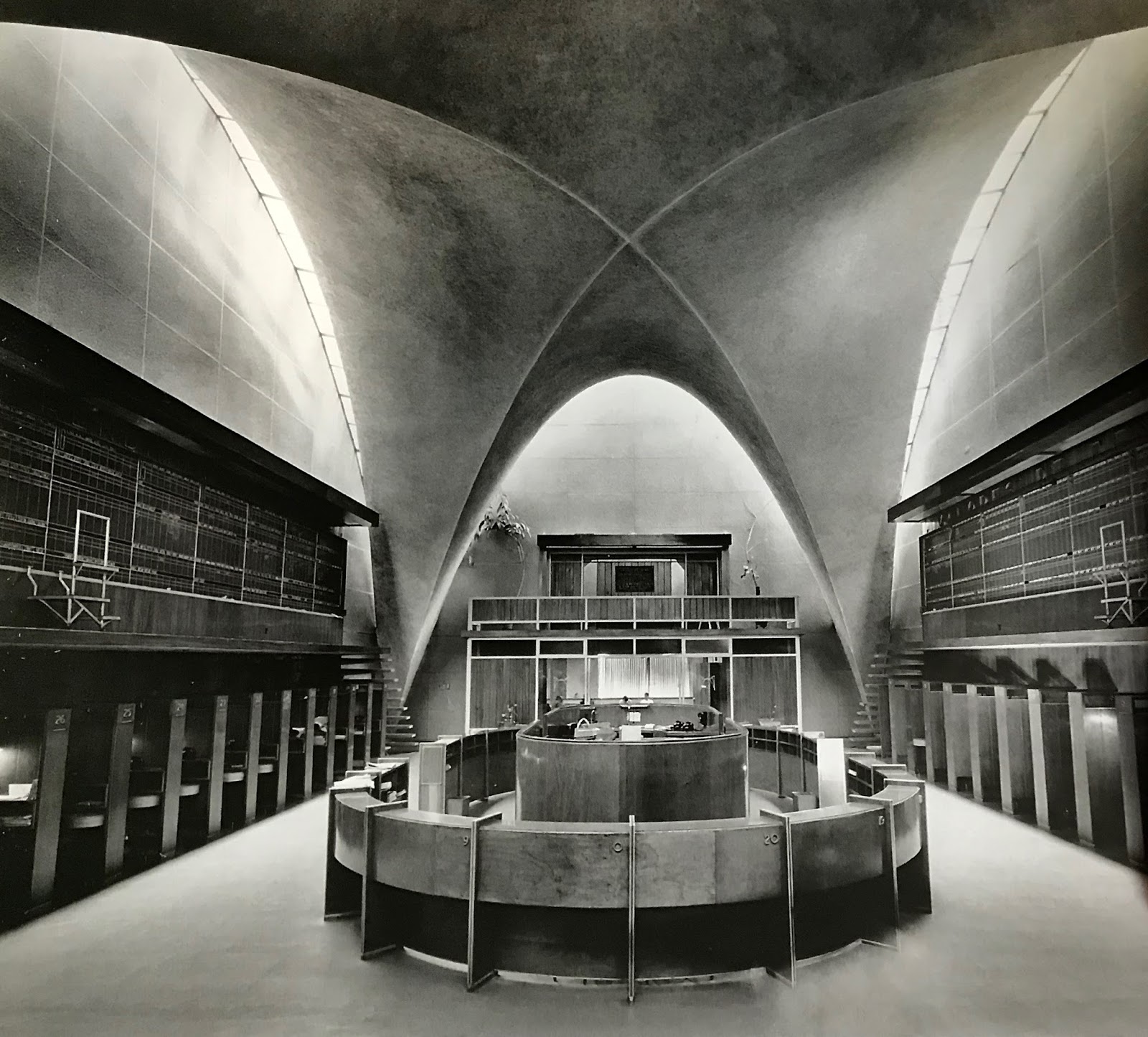“I know how we are doing the Bolsa de Valores, we are doing the transept of La Purísima” the architect told me one day. He wanted to build the dome with a large contractor, but after sending the drawings, they came back to us saying that, of course, the project would be unforgettable, but we had to calculate it. Leonard Zeevaert, the pope of structure at that time, told us that it would not work. Therefore we contacted to Manuel González Flores who was also very good and astute in the field. However, at that time a drafter in the office came to me and told me “There is a guy that makes these stuff”. At the same time Felix Candela was with us. The project of the Mexican Stock Exchange was finished. Candela understood very well the logic of the dome with two hyberpolic paraboloids and we worked with that idea using his calculations that improved the budget of the Gonzalez Flores that wanted to do a very expensive wood model. That was the encounter with Candela. During the construction process the legs of the formwork were broken because we were obsessed with the ogival structure and the sharp curves of the dome. These had to join in its bottom part. We had to thin the section and it broke when we removed the de formwork. However, we could replace them before removing it completely. After that there were many doubts. People even said that we had built the dome of the Centro Asturiano (from Alvarez Ordoñez and Heberto Castillo) that fell down. At that time, Ramírez Vázquez signed everything, but after the Stock Exchange Building El Altillo came with the development of the ideas of free edges domes.”
“Ya sé como vamos a hacer la Bolsa de Valores, vamos a hacer el crucero de La Purísima” llegó a decirme un día el arquitecto. Él quería hacer la bóveda con una gran constructora, pero luego de que es entregamos los planos regresaron diciendo que sin duda el proyecto pasaría a la inmortalidad, pero que para realizarlo nosotros debíamos calcularlo. Leonardo Zeevaert, quien era el Papa de las estructuras, en el sentido litúrgico, nos dijo que no funcionaría, así que fuimos con Manuel González Flores, quien también tenía muchos pantalones y era muy astuto. Pero en ese entonces, un dibujante del despacho se me acercó y me dijo: “Hay un guachupín que hace esas cosas”. Y al día siguiente estaba Félix Candela con nosotros. El proyecto de la Bolsa ya estaba terminado, Candela entendió muy bien la lógica de la bóveda por arista con dos paraboloides hiperbólicos y así que se trabajó la idea con su cálculo, pues había mejorado el presupuesto del proyecto de González Flores que quería hacer una maqueta en madera muy costosa. Y así fue el encuentro con Candela. En el proceso de la obra se rompieron las patas de la cimbra, pues estábamos obsesionados con la estructura ojival y las curvas nítidas de la bóveda, porque éstas deberían juntarse en el piso. Tuvimos que adelgazar el manto y tronó al momento del descimbrado, pero después las reemplazamos antes de quitarlas por completo. Posteriormente hubo muchas intrigas, incluso se decía que nosotros habíamos construido la bóveda del Centro Asturiano (de Álvarez Ordóñez y Heberto Castillo) que se cayó. En esa época ya todo lo firmaba Ramírez Vázquez, pero luego de la Bolsa de Valores, como proceso de desarrollo de las ideas vino El Altillo con bordes libres, pero con una bóveda por aristas.”
Extract of the interview to Fernando López Carmona by Lucia de la Mora y Enrique de la Mora Askinasy. 2013.












